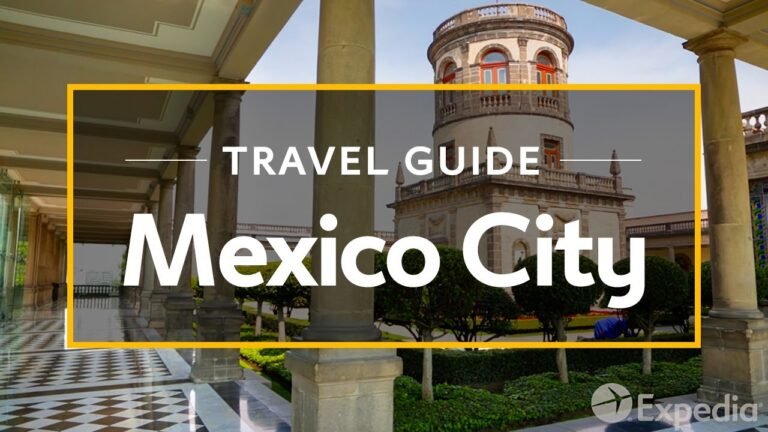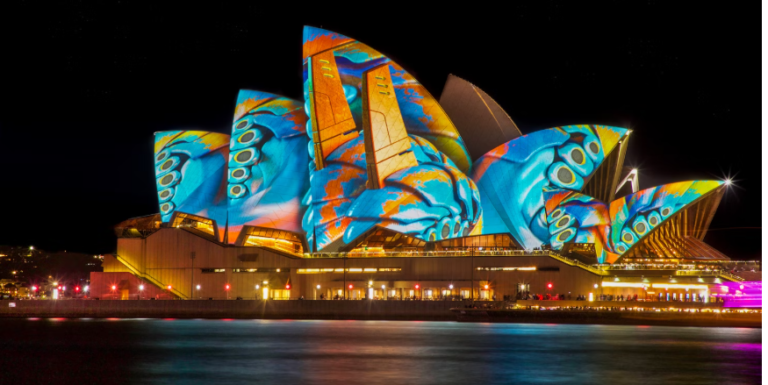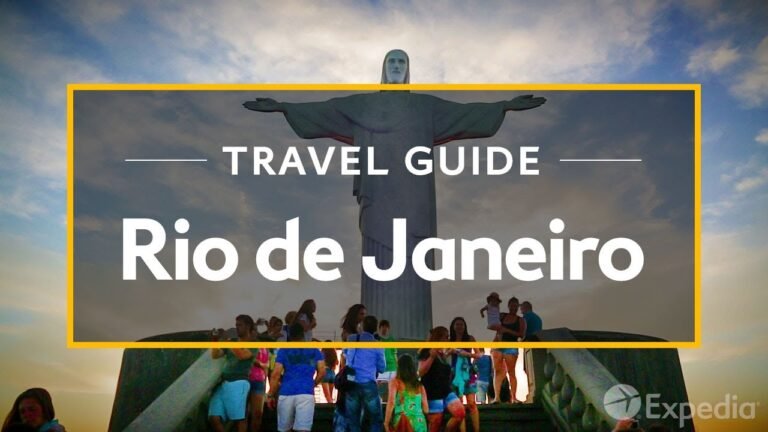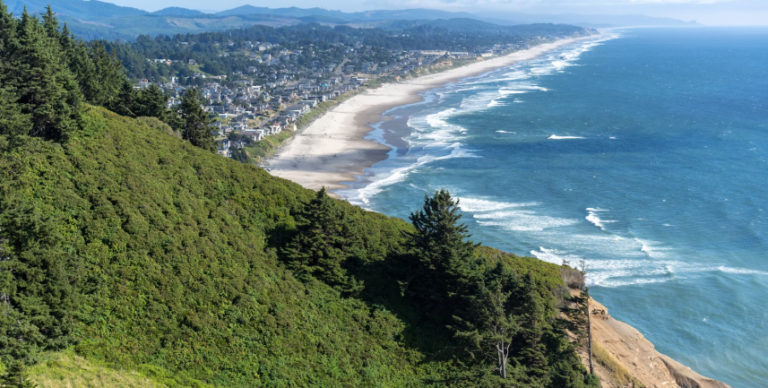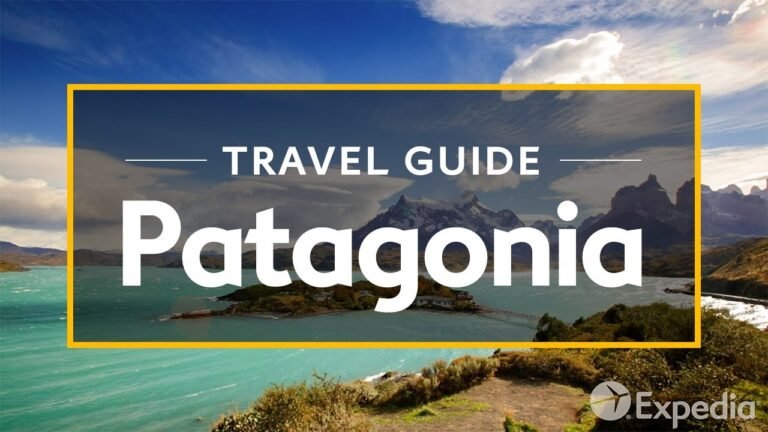New York City – Vacation Travel Guide
New York City
Vacation Travel Guide
Are you dreaming of a vacation that combines breathtaking skylines, world-class museums, diverse food scenes, and vibrant culture? Look no further than the Big Apple! New York City welcomes over 66 million visitors annually, for good reason. This guide will walk you through everything you need to know about NYC, from its fascinating history to must-see attractions and hidden gems. 
Table of Contents
- The Magic of NYC: Why People Fall in Love
- NYC’s Fascinating History
- Must-Visit Iconic Landmarks
- Cultural Treasures: Museums and Libraries
- Green Spaces: Parks That Surprise Visitors
- Food Paradise: Where to Eat
- Diversity: The Heart of New York
- Getting Around: Transportation Tips
- Surprising NYC Facts
- Planning Your Trip: When to Visit
The Magic of NYC: Why People Fall in Love
“If you want to become a real New Yorker, there’s only one rule: You have to believe New York is, has been, and always will be the greatest city on Earth. The center of the universe.” – Ellen R. Shapiro
There’s something magical about New York City that captures the hearts of visitors worldwide. Maybe it’s the towering skyscrapers, the endless energy of its streets, or the feeling that anything is possible here. Whatever draws you in, New York offers experiences you won’t find anywhere else.
The city pulses with life 24/7, earning its nickname “The City That Never Sleeps.” Every corner of NYC holds a new adventure, from Broadway shows to world-class shopping, hidden speakeasies, and street food vendors. Furthermore, the city’s unmatched diversity means you’ll encounter cultures from around the globe within just a few blocks. 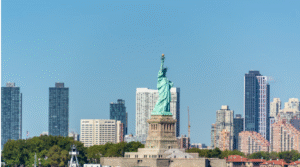
NYC’s Fascinating History
From New Amsterdam to the Big Apple
Did you know New York City wasn’t always called New York? The island of Manhattan was originally settled by the Dutch in 1624 and named New Amsterdam. However, when the English took control in 1664, they renamed it after the Duke of York, giving us the name we know today.
If you’re nostalgic for those Dutch origins, stroll down Amsterdam Avenue on the Upper West Side. You’ll notice buildings reminiscent of Amsterdam’s iconic triangular-shaped architecture. Additionally, many street names throughout the city offer clues to its rich historical past.
The city has evolved dramatically over the centuries, transforming from a small trading post to the global financial and cultural capital it is today. Throughout this evolution, New York has maintained its reputation as a gateway for immigrants seeking new opportunities. In fact, the Statue of Liberty has welcomed newcomers for over 135 years!
Lady Liberty: France’s Gift to America
Speaking of the Statue of Liberty, here’s a fascinating fact: this iconic American freedom symbol was a gift from France! Dedicated in 1886, the people of France gave Lady Liberty to the United States to celebrate 100 years of American independence. 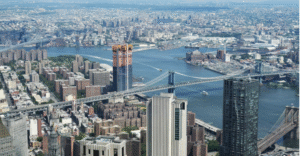
The statue arrived in America in 350 pieces and took four months to assemble (it is a small replica of the statue in Las Vegas). Designed by three Frenchmen, including Gustave Eiffel (yes, the same Eiffel behind Paris’s famous tower), it quickly became an iconic symbol of freedom and welcome for immigrants arriving in America.
Today, visiting the Statue of Liberty remains one of the most popular tourist activities. The seven spikes on her crown represent the seven oceans and continents of the world, symbolizing universal liberty. Meanwhile, her right-hand holds a torch while her left clutches a book inscribed with the date of the Declaration of Independence.
Must-Visit Iconic Landmarks
Empire State Building: A Sky-High Experience
The Empire State Building isn’t just a building—it’s an experience. This iconic skyscraper is the fourth largest in New York City and the sixth tallest in the country. It’s so significant that it has its own zip code: 10118!
For the ultimate NYC view, head to the observation deck, where you’ll see the city spread out before you like a living map. On a clear day, you can see up to 80 miles in every direction, spanning five states. As an interesting side note, the building gets struck by lightning approximately 23 times yearly!
Brooklyn Bridge: Historic Engineering Marvel
The Brooklyn Bridge is one of America’s oldest bridges, connecting Manhattan to Brooklyn. Construction began in 1869, and when completed in 1883, it was the longest suspension bridge in the world.
Here’s a fun fact to impress your friends: the Brooklyn Bridge is older than London’s famous Tower Bridge! While many assume London’s iconic bridge came first, the Brooklyn Bridge opened to the public 11 years earlier. Moreover, it was the world’s first steel-wire suspension bridge, making it a true pioneer in engineering. 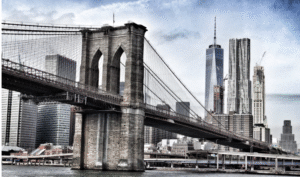
Walking across the Brooklyn Bridge is a must-do activity for visitors. The pedestrian walkway offers spectacular views of the Manhattan skyline, and the experience of crossing this historic structure connects you with generations of New Yorkers who have made the same journey.
Cultural Treasures: Museums and Libraries
The Metropolitan Museum of Art: A World of Wonders
New York City houses the fifth largest museum in the world, the Metropolitan Museum of Art, commonly known as “The Met.” This cultural treasure contains more than 2 million pieces of art spanning over 5,000 years of human creativity.
The Met attracts around 6 million visitors annually, making it the most visited museum in New York City. The collection offers something for every interest, from ancient Egyptian artifacts to contemporary masterpieces. Plan to spend at least half a day here, as the museum’s vast galleries could take weeks to explore fully.
Some must-see highlights include the Temple of Dendur, the extensive collection of Impressionist paintings, and the rooftop garden that offers stunning views of Central Park. Even better, the museum operates on a pay-what-you-wish basis for New York State residents and students from New York, New Jersey, and Connecticut.
New York Public Library: Literary Masterpiece
The New York Public Library is more than just books—it is an architectural marvel and cultural institution. When it opened to the public in 1911, it was the largest marble building ever constructed in the United States. The project took 16 years to complete, but the wait was worth it—more than 50,000 people showed up on opening day! 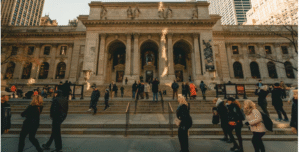
Today, with 55 million items in its collection, the New York Public Library ranks as the second-largest library in America (second only to the Library of Congress) and the fourth-largest library in the world. Beyond books, it houses fascinating artifacts, including locks of Walt Whitman’s hair.
Don’t miss the magnificent Rose Main Reading Room with its 52-foot ceilings and stunning chandeliers. The famous lion statues guarding the entrance, nicknamed Patience and Fortitude, have become symbols of the library and the city itself.
Green Spaces: Parks That Surprise Visitors
Central Park: An Urban Oasis
Many visitors are surprised to learn that about 22% of New York City’s land is dedicated to public parks. Central Park, an 843-acre oasis in the heart of Manhattan, is the crown jewel among these green spaces. Central Park is actually larger than the entire country of Monaco!
Central Park isn’t just beloved by New Yorkers—it’s also the most filmed location in the world, featured in more than 530 movies. For comparison, London’s Trafalgar Square is the second most filmed location globally, with just 131 movie credits. 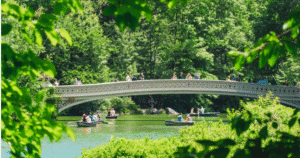
The park offers endless activities year-round: rowing boats on the lake in summer, ice skating in winter, picnicking in spring and admiring the colorful foliage in fall. Additionally, Central Park serves as a birding paradise—of the 800 known North American bird species, 275 have been spotted here. Some birders claim to have identified 100 different species in a single day during migration season!
Accessibility of Green Spaces
One of NYC’s most significant achievements is making green spaces accessible to everyone. An impressive 99% of New York City residents live within a 10-minute walk of a park, which provides crucial respite from the city’s hustle and bustle.
Beyond Central Park, explore other beautiful parks like Washington Square Park with its iconic arch, Brooklyn’s Prospect Park, designed by the same team behind Central Park, or the innovative High Line, an elevated park built on a former railway track. Moreover, many of NYC’s parks offer free events throughout the year, from outdoor concerts to movie screenings and fitness classes.
Food Paradise: Where to Eat
Pizza: A New York Institution
You can’t visit New York City without eating pizza, and there’s a good reason for that—NYC is home to the first pizzeria in America! Opened in 1905 by Gennaro Lombardi, a native of Naples, Italy, Lombardi’s Pizza introduced Americans to what would become a national obsession.
The best part? Lombardi’s is still operating today, serving some of the best pizza in the city. With over 1,600 pizzerias in NYC, that’s saying a lot! While exploring the town, follow the “Pizza Principle”—an economic theory suggesting that the cost of a subway ride and a slice of pizza in New York should remain roughly equal. Both hover around $3, proving the principle still holds true. 
Diverse Culinary Scene
Beyond pizza, New York offers cuisine from virtually every country on Earth. The city is a foodie’s dream come true, from high-end Michelin-starred restaurants to food trucks and everything in between.
Don’t miss these culinary experiences:
- Grab a bagel with lox for breakfast
- Sample dumplings in Chinatown
- Try a pastrami sandwich at a historic deli
- Explore the food halls at Chelsea Market or Time Out Market
- Taste international street food at Smorgasburg (seasonal outdoor food market)
The beauty of dining in New York is that you can find incredible meals at every price point. Some of the most memorable food experiences might come from that tiny corner restaurant or food cart rather than the fancy establishment with the long waiting list.
Diversity: The Heart of New York
A Global Melting Pot
New York City truly embraces diversity like no other place on Earth. More than 8.5 million people call NYC home, making it the most populous city in the country. In fact, NYC has more residents than 40 of the 50 U.S. states!
The city has the highest Jewish population outside of Israel, the largest Hispanic population of any U.S. city, the most significant Chinese population outside of Asia, and the largest Puerto Rican population worldwide. This incredible diversity creates the unique energy and culture that defines New York.
Languages of New York
On any given day in NYC, you might hear dozens of different languages being spoken around you. More than 200 languages are spoken throughout the five boroughs, making New York one of the most linguistically diverse cities in the world.
Approximately 37% of New Yorkers were born outside the United States, and nearly half of all households speak a language other than English. This linguistic tapestry adds to the city’s cultural richness. It ensures that whatever your background, you can find a piece of home in New York.
Getting Around: Transportation Tips
The Subway: NYC’s Lifeline
The New York City subway system is a marvel of public transportation that connects all five boroughs. More than 4.3 million people ride the subway daily—over 1 billion riders annually!
While it may initially seem intimidating, the subway is often the fastest and most affordable way to travel around the city. Trains run 24/7, though service may be reduced late at night. A ride costs $2.95, and weekly or monthly passes are available for more extended stays.
Some subway tips for visitors:
- Download the MTA app for real-time updates
- Stand clear of closing doors (a phrase you’ll hear often)
- Let passengers exit before boarding
- Hold onto poles or straps during the ride
- Be aware of express vs. local trains
Walking: The Best Way to Experience NYC
Despite its reputation for bustling streets and honking taxis (which is technically illegal except in emergencies), New York is one of America’s most walkable cities. Walking allows you to discover hidden gems and experience the unique character of each neighborhood.
Comfortable shoes are essential! New Yorkers easily walk several miles a day navigating the city grid. Remember that streets run east-west, while avenues run north-south, making it relatively easy to find your way around Manhattan.
Surprising NYC Facts
Coastal City Surprise
Did you know that New York City has 520 miles of coastline? That’s more than Miami, Los Angeles, San Francisco, and Boston combined! NYC offers numerous waterfront areas to explore as a collection of islands and peninsulas.
Take advantage of this by riding the free Staten Island Ferry for spectacular views of the harbor and the Statue of Liberty. You can also visit waterfront parks like Brooklyn Bridge Park, Gantry Plaza State Park in Queens, or Hudson River Park for amazing skyline views.
The High Cost of Living
New York consistently ranks among the world’s most expensive cities—currently, it is the sixth most expensive globally. Housing costs are particularly steep, with rental prices increasing by over 34% in recent years.
This high cost extends to other aspects of city life as well. Would operating a hot dog stand in Central Park cost vendors between $125,000 and $300,000 annually just for the permit? Despite these prices, New York is home to more billionaires than any other city worldwide, plus approximately 380,000 millionaires!
Planning Your Trip: When to Visit
Seasonal Considerations
Each season offers a different New York experience:
Spring (April-June): Mild temperatures and blooming parks make this a beautiful time to visit. The city comes alive with outdoor activities and festivals.
Summer (July-August): Expect hot weather and humidity, free outdoor concerts, movies in the parks, and lively street fairs. This is peak tourist season, so attractions will be crowded.
Fall (September-November): Many consider this the perfect time to visit New York. The weather is comfortable, Central Park’s foliage is stunning, and cultural institutions launch new seasons.
Winter (December-March): Cold temperatures bring magical holiday decorations, ice skating rinks, and potentially snow-covered parks. January and February offer the lowest hotel rates but require warm clothing.
Budget Planning
While New York can be expensive, there are plenty of ways to experience the city without breaking the bank:
- Many museums offer “pay-what-you-wish” days
- Take advantage of free attractions like Central Park, the High Line, and Staten Island Ferry
- Eat at food trucks or grab pizza slices instead of sit-down restaurants
- Look for discount Broadway tickets at TKTS booths
- Consider staying in outer boroughs like Queens or Brooklyn for lower accommodation prices
Your NYC Adventure Awaits!
New York City truly has something for everyone—history buffs, art lovers, foodies, shoppers, nature enthusiasts, and those simply seeking the energy of one of the world’s greatest cities. The diversity, culture, and nonstop activity create an atmosphere unlike anywhere else on Earth.
Whether you’re planning your first visit or returning for another adventure, New York City promises unforgettable experiences and memories that will last a lifetime. Start planning your New York City bucket list today, and discover why millions of visitors fall in love with the Big Apple every year!
Have you visited New York City before? What was your favorite experience? Share in the comments below!
New York Quotes: One Rule to Become a Real New Yorker. https://www.nydailyquote.com/2012/03/one-rule-to-become-real-new-yorker.html


